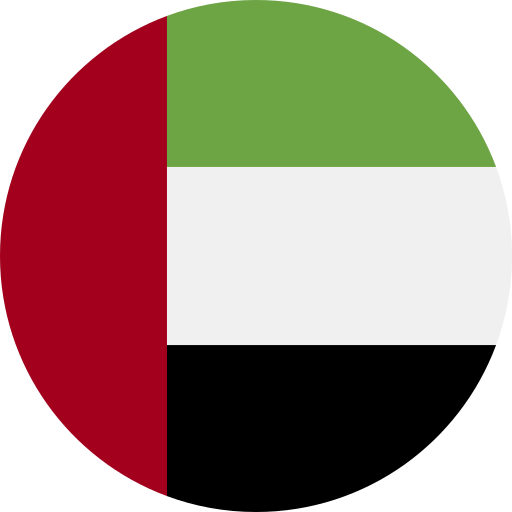Key Takeaways
- Multilingual Diversity: Regions where Arabic is spoken, such as North Africa and the Middle East, showcase a blend of local dialects and languages, enriching cultural interactions.
- Historical Influence: The emergence of Arabic as a lingua franca was significantly shaped by trade, religion, and colonialism, impacting linguistic dynamics in these areas.
- Communication Challenges: Navigating multilingual regions requires understanding local dialects and variations from Modern Standard Arabic to foster effective communication.
- Cultural Enrichment: Multilingualism influences literature and arts, creating unique expressions that reflect the diverse backgrounds of speakers in these regions.
- Educational Strategies: Education systems adapt to multilingual environments by incorporating multiple language tracks to enhance student proficiency and cultural understanding.
- Voice Talent Selection: For projects targeting these communities, choosing voice talent familiar with regional dialects enhances authenticity and audience engagement.
Have you ever wondered how many languages blend seamlessly in regions where Arabic is spoken? In today’s global landscape, understanding these multilingual areas isn’t just fascinating; it’s essential for anyone looking to connect with diverse cultures. From North Africa to the Middle East, Arabic coexists with a variety of local dialects and languages, creating rich tapestries of communication.
Exploring these multilingual regions reveals not only the beauty of linguistic diversity but also the challenges that come with it. How do people navigate their daily lives amid such vibrant language mixes? Whether you’re planning to travel or simply curious about cultural dynamics, diving into this topic can enhance your appreciation for the world around you and open doors to deeper connections.
Overview of Multilingual Regions
Multilingual regions where Arabic is spoken showcase a rich tapestry of languages and cultures. In North Africa, countries like Morocco, Algeria, and Tunisia feature Arabic alongside Berber languages and French. This blend creates unique dialects that reflect the history and identity of each area.
In the Middle East, nations such as Lebanon, Syria, and Jordan illustrate similar diversity. Here, Arabic coexists with Armenian, Kurdish, and English. Each language adds to the cultural fabric while also presenting challenges in communication.
Navigating these environments requires awareness of local dialects. You’ll encounter variations in pronunciation and vocabulary that may differ significantly from Modern Standard Arabic. For instance, Levantine Arabic has distinct phrases not found in other regions.
Understanding this multilingual landscape enriches your experience when interacting with locals or conducting business. Recognizing the nuances can foster deeper connections across diverse communities.
When considering voiceover projects in these areas, a nuanced approach matters. Effective voice talent often adapts their delivery to resonate with listeners who speak various dialects or languages within these multilingual contexts. Whether for advertising or educational content, selecting the right voice artist who understands regional subtleties enhances audience engagement.
These regions offer vibrant linguistic experiences that are worth exploring further if you’re looking to connect on a deeper level through any form of communication.
Historical Context of Arabic Language
Arabic boasts a rich history that intertwines with various cultures and languages. Understanding this context enhances your appreciation for the linguistic diversity in regions where it’s spoken.
Emergence of Arabic as a Lingua Franca
Arabic emerged as a lingua franca through trade, religion, and cultural exchange. With the rise of Islam in the 7th century, Arabic spread across North Africa and the Middle East. The Quran’s influence played a crucial role in unifying diverse tribes under a common language. Cities like Baghdad became intellectual hubs, further promoting Arabic as a means of communication among scholars from different backgrounds. Today, Modern Standard Arabic serves as the formal language across many countries while local dialects reflect regional identities.
Influence of Colonialism on Language Diversity
Colonialism significantly shaped language dynamics in multilingual regions where Arabic is spoken. French and English colonial powers imposed their languages on North African countries like Algeria and Tunisia. This led to hybrid dialects incorporating elements from both colonial languages and local vernaculars. In countries such as Lebanon and Syria, Western influences introduced new vocabulary while maintaining Arabic’s core structure. Understanding these historical influences is essential for recognizing the complexities involved when engaging with diverse communities or selecting voice talent that resonates with specific regional nuances.
Major Multilingual Regions Where Arabic Is Spoken
Arabic thrives in various multilingual regions, creating rich linguistic landscapes. Understanding these areas offers insights into their unique cultural dynamics and communication styles.
North Africa
In North Africa, countries like Morocco, Algeria, and Tunisia showcase a blend of Arabic with local Berber languages and French. This combination results in distinct dialects such as Darija in Morocco or Tamazight in Algeria. You’ll find that these dialects reflect the region’s history and identity while influencing daily interactions. Engaging with local speakers often requires familiarity with these variations to navigate conversations effectively. For voiceover projects set in this region, selecting voice talent who understands these nuances can enhance authenticity.
The Middle East
The Middle East presents another vibrant tapestry of languages where Arabic coexists with Armenian, Kurdish, and English in countries like Lebanon, Syria, and Jordan. Each country has its own regional dialects alongside Modern Standard Arabic used for formal communications. This multilingual environment enriches cultural expressions but can complicate clear communication. If you’re considering voiceovers targeting this audience, choosing a voice artist familiar with specific dialects will resonate more deeply with listeners.
Communities in Europe
Communities across Europe also reflect the influence of Arabic through migration and globalization. Countries like France and Spain have significant Arab-speaking populations where dialects meld with local languages—creating hybrid forms of communication that mirror the multicultural experience. In such contexts, understanding both the language intricacies and cultural references becomes crucial for effective interaction. When seeking voiceover talent for European audiences familiar with Arabic influences, opting for artists who embrace this diversity ensures your message connects powerfully.
Navigating these multilingual regions opens doors to deeper connections based on respect for cultural differences and shared understanding through language.
Cultural Impact of Multilingualism
Multilingualism in regions where Arabic is spoken significantly shapes cultural landscapes. The interaction between Arabic and local languages fosters unique literary expressions, artistic movements, and educational policies.
Literature and Arts
Literature thrives in multilingual environments. Arabic literature often reflects a blend of styles from various cultures, enhancing storytelling techniques. Poets like Mahmoud Darwish incorporate elements from Hebrew and English, creating rich narratives that resonate with diverse audiences.
Visual arts also flourish through the interplay of languages. Artists draw inspiration from their multilingual backgrounds, producing works that celebrate cultural heritage while addressing contemporary issues. For instance, murals in urban spaces often combine Arabic calligraphy with Western artistic styles, resulting in compelling visual dialogues.
Education and Language Policy
Education systems must navigate the complexities of multilingualism effectively. In many countries where Arabic coexists with other languages, curricula often include multiple language tracks to accommodate diverse student populations. This approach not only enhances language proficiency but also enriches students’ understanding of different cultures.
Language policy plays a vital role in promoting inclusivity within these educational frameworks. Governments encourage bilingual education to ensure students gain skills necessary for global communication while preserving local dialects and identities.
In this vibrant linguistic landscape, selecting the right voice talent for projects becomes essential. Engaging voice artists familiar with specific regional dialects can enhance authenticity and resonance with target audiences. Understanding these cultural nuances allows you to connect more deeply through your projects, ensuring they reflect the richness of the community you’re representing.
Challenges Faced in Multilingual Regions
Multilingual regions present unique challenges that impact communication and cultural interaction. Navigating these environments often requires understanding the interplay of languages and dialects.
Language Preservation
Language preservation becomes crucial in multilingual areas where Arabic coexists with local dialects. Communities strive to maintain their linguistic heritage while adapting to dominant languages like French or English. This tension can lead to a decline in native language use, particularly among younger generations. When selecting voice talent for projects, consider artists who are not only fluent in Arabic but also familiar with regional dialects. Their ability to convey authentic cultural nuances can enhance your message’s impact.
Socio-Political Implications
Socio-political factors significantly influence language dynamics within multilingual regions. Language often serves as an identity marker, which can exacerbate tensions among groups. For instance, political movements may promote specific languages at the expense of others, affecting public education and media representation. Engaging voice actors from diverse backgrounds can provide insights into these complexities and ensure sensitive representation in your projects. Understanding these implications is vital for fostering inclusivity and respect within your content, ultimately resonating more deeply with audiences across various cultures.
Conclusion
Exploring multilingual regions where Arabic is spoken opens up a world of cultural richness and complexity. Understanding the interplay between Arabic and local dialects not only enhances your communication skills but also deepens your appreciation for diverse cultures.
As you navigate these vibrant linguistic landscapes, recognize the beauty in their unique expressions and histories. This knowledge will serve you well whether you’re traveling or engaging with communities around the globe. Embracing this linguistic diversity can lead to meaningful connections that enrich your experiences and broaden your worldview.
Frequently Asked Questions
What linguistic diversity exists in Arabic-speaking regions?
Arabic-speaking regions, particularly in North Africa and the Middle East, showcase a rich tapestry of languages. Here, Arabic coexists with local dialects and languages like Berber, French, Armenian, Kurdish, and English. This diversity reflects unique historical influences and regional identities.
How has colonialism impacted language diversity in these areas?
Colonialism introduced European languages into North African countries, resulting in hybrid dialects that blend local vernaculars with French or English. These influences shaped modern communication styles while maintaining the core structure of Arabic.
Why is understanding local dialects important?
Understanding local dialects enhances effective communication within multilingual communities. Dialects often carry cultural significance and context that can improve connections with locals, making it essential for travelers or those engaging in cultural exchanges.
How does multilingualism influence education policies?
Multilingualism necessitates educational curricula that accommodate various language tracks to promote proficiency and cultural understanding. Language policy plays a critical role in ensuring inclusivity while preserving local dialects for future generations.
What are the challenges faced by speakers in multilingual regions?
Navigating multilingual environments presents challenges such as miscommunication due to varying dialects and languages. Additionally, there’s an ongoing struggle to preserve native languages amidst dominant ones like French or English that may overshadow them.
How does language serve as an identity marker?
Language acts as a key identifier among different groups within multicultural societies. It can create unity but also exacerbate tensions if political movements favor one language over another at the expense of others’ rights to use their native tongues.







